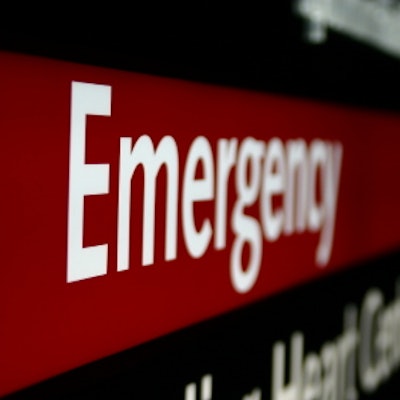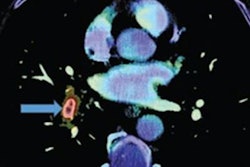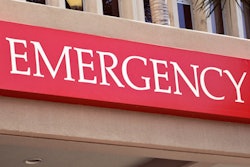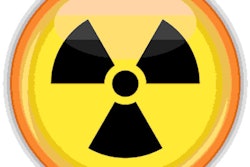
Educational and imaging protocol interventions can improve CT trauma exam turnaround time in the emergency department (ED), according to a study published March 22 in the Journal of Computer Assisted Tomography.
The results could have wide-ranging positive effects, wrote a team led by Dr. Erika Wood of the University of Wisconsin in Madison.
"Optimizing radiology workflow and improving technologist efficiency could lead not only to improved patient outcomes but also improved worker satisfaction and retention and could provide a hospital cost reduction benefit," the group noted.
CT is a reliable tool for the diagnostic workup of trauma patients, helping clinicians determine how best to care for patients; previous research has suggested that early trauma CT can reduce the length of hospital stay, intensive care unit admissions, and surgical interventions, the group noted.
But as the use of CT in trauma settings and the number of patients admitted to the emergency department has increased, ED overcrowding has become a real issue, and some point to imaging scan times as part of the problem -- in fact, Wood and colleagues cited research that has shown that 34 unique tasks (such as consulting the patient's electronic medical record, taking localization images, administering contrast, conducting the exam, reformatting images, and sending images to the PACS) -- are required for a technologist to take a patient through a single CT exam.
"While multiple factors have been attributed to ED overcrowding, imaging turnaround times have often been cited both within the U.S. health care system and internationally," the team noted. "Therefore, prompt CT scanning and radiology reporting should be a priority in the ED trauma workflow to ensure optimal patient care while decreasing factors contributing to ED overcrowding."
To make matters worse, the nation is experiencing a technologist workforce shortage, Wood and colleagues explained, writing that "optimizing radiology workflow and improving technologist efficiency could lead not only to improved patient outcomes but also improved worker satisfaction and retention and could provide a hospital cost reduction benefit."
The study included data from 17,709 CT trauma scans taken between January 2018 and December 2019, the most common of which were CT head without contrast and abdomen/pelvis and chest with contrast. The data showed that procedural variations by technologists influenced trauma imaging turnaround time, which prompted a two-part intervention initiated in December 2019. The intervention consisted of an education module that outlined current CT trauma imaging workflow and recommended that technologists mark each scan as reviewed when completed instead of waiting until all scans were completed (allowing radiologists to begin exam review before the study was marked completed) and a modified CT abdomen/pelvis imaging protocol that immediately generated and sent exam information to the hospital's PACS.
Postintervention, the investigators evaluated 13,169 trauma CT scans that had been taken between January 2020 and March 2021. The team tracked metrics such as the interval between first and last image, emergency department length of stay, and variations between individual technologists.
The group found that the intervention improved trauma CT scan workflow, both overall and particularly for abdominal/pelvis scans (on which the team focused because they were the main target of the intervention).
| Pre- and postintervention metrics for emergency department CT trauma imaging turnaround time | |||
| Metric | Preintervention | Postintervention | p-value |
| Interval between first and last image (all CT trauma exams) | 21.6 minutes | 7.8 minutes | 0.001 |
| Interval between first and last image (CT trauma abdomen/pelvis) | 11.4 minutes | 4.2 minutes | 0.001 |
| Emergency department length of stay (all CT trauma exams) | 3.8 hours | 3.6 hours | < 0.0001 |
| Emergency department length of stay (CT trauma abdomen/pelvis) | 3.9 hours | 3.7 hours | 0.0001 |
The group also found that, before the intervention, variations among imaging technologists for trauma CT scan times were near statistical significance, but those variations became less so after the intervention was implemented (p = 0.09 compared with p = 0.54).
The differences pre- and postintervention may seem small, but they add up, the authors concluded.
"If 10 trauma patients are seen in a 24-hour period and each sees a length-of-stay reduction of 12 minutes, that 12 minutes becomes two hours and if other diagnostic studies are incrementally improved these incremental improvements begin to add up," they wrote. "In this time of chronic overcrowding and boarding in our ED, our ED faculty have felt that this decrease of 12 minutes is very impactful."





















